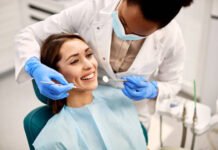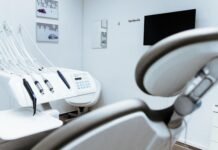Last Updated on March 12, 2024 by admin
I drink plenty of water, so why do I have acne? I have outgrown my teenage years, why I still get pimples? I wash my face regularly so why my skin is still bad? These questions are often asked by people suffering from adult acne. A single pimple can disturb your sleep, let alone a breakout.
If you suffer from acne even if you have outgrown your adolescence, you need not worry because you are not alone. Acne is one of the most collective skin conditions in the world, affecting an estimated 85% of young adults.
Acne stands a skin disorder where cavities or pores get congested with oil, debris, and deceased skin lockups. These congested pores show themselves in the form of blackheads, whiteheads, pimples, or cysts. Acne is very much treatable but in some cases, it can be persistent and may need medical attention. Depending on the severity acne has the potential to cause scars on the crust and mental stress. It is advised to start treatment early, so you may not reach the stage where it affects your mind.
The key to treating acne is persistence. There are various treatments available to treat acne, from ayurvedic creams to direct acids, all claiming to show results within days. But a lesser-known fact is that different sorts of acne demand different treatments.
The main cause of all varieties of acne is clogged pores. Clogged pores owe their existence to superfluous production of lubricant (sebum), bacteria, hormones, lifeless skin cells, and ingrown tresses. Classifying the type of acne can help in choosing an effective treatment. Usually, people suffer from a single type of acne but your acne canister be a combination of various types too. If you’re in Singapore and seeking tailored solutions, considering professional guidance and exploring options like acne treatment in Singapore is a prudent step.
Table of Contents
Kinds Of Acne
All forms of acne are broadly classifies as inflammatory or non-inflammatory. Blackheads and whiteheads are noninflammatory while the rest are inflammatory.
Whiteheads
When your pores get clogged all the way through, they appear as whiteheads. These are also called closed comedones. The
heads of these clogged pores are closed and appears as white bumps on the skin.
Over-the-counter products that contain salicylic acid, sulfur, or benzoyl peroxide can help in clearing out whiteheads. A commonly used procedure is physical extraction. But this not a permanent solution and can even result in scarring.
Blackheads
The main difference between whiteheads and blackheads is, that the ends of blackheads are open. The open end appears black in color and the rest of the pore is closed.
Blackheads have the same treatment options as whiteheads. People often use pore strips to get rid of blackheads but this practice is quite ineffective. Pore strips are abrasive and can damage the top layer of your membrane. So it is wise to go for chemical cleansing and blackhead removal.
Pustules
These are small bumps with a white center and red skin surrounding them. They appear as yellow or white in color. Pustules can also form when the walls around your pores breakdown. Pustules usually occur when a clogged pore gets infected, but they can also be caused by hormonal vagaries. These contain a yellowish fluid called pus.
Squeezing the pus out is quite tempting but it can lead to permanent scarring. Popping pustules can spread the bacteria in the surrounding region and can worsen the condition.
Doctors often recommend antibiotics to treat pustules permanently. Topical retinoids and benzoyl peroxide are effective over-the-counter treatments. Birth control pills are also prescribed to reduce this form of inflammatory acne.
Papules
Papules appear as small red bumps on the skin. These appear when a pore gets blocked in excess skin cells or oils. This gunk mixes with the bacteria on your skin called Cutibacterium acnes or C. acnes. Papules occur when the walls around pores breakdown and result in hard, clogged pores. These pores are tender to touch. The main difference between papules and pustules is that the former do not contain pus.
The OTC (over-the-counter) treatment options are benzoyl peroxide and retinoids.
Nodules
These are characterized via red bumps that are deep under the surface. This type of acne is caused through C. acne bacteria. This bacteria causes a painful infection deep within the pores.
There are no effective OTC treatments available for nodular acne, because such treatment work on the surface of the skin only. Doctors usually recommend salicylic acid, antibiotics, birth control pills, and retinoids to treat nodular activity.
Oftentimes, medicines don’t work and the doctors have to drain the nodules. Physical, laser, or chemical peeling are used for this process. This peeling works by removing the upper layer of your skin.
Cysts
Cysts occur when pores get clogged with bacteria, sebum, and dead cells. Cysts occur even deeper into the skin than nodules. These are the largest form of acne and are very painful to touch. Cysts can easily lead to infection and are likely to scar the skin.
Sotret (isotretinoin) is the most commonly prescribed medicine. In severe cases, dermatologists need to remove them surgically.
The Bottom Line
Although various OTC treatments are available to treat your acne. Nothing replaces the professional advice from a dermatologist. If you are sick of your pimples and want to get rid of them permanently, you should consult a dermatologist. A professional can access your condition and prescribe suitable treatments. It is important to keep in mind that the OTC treatments can have side effects too. So seeking help from a dermatologist is very important.






















